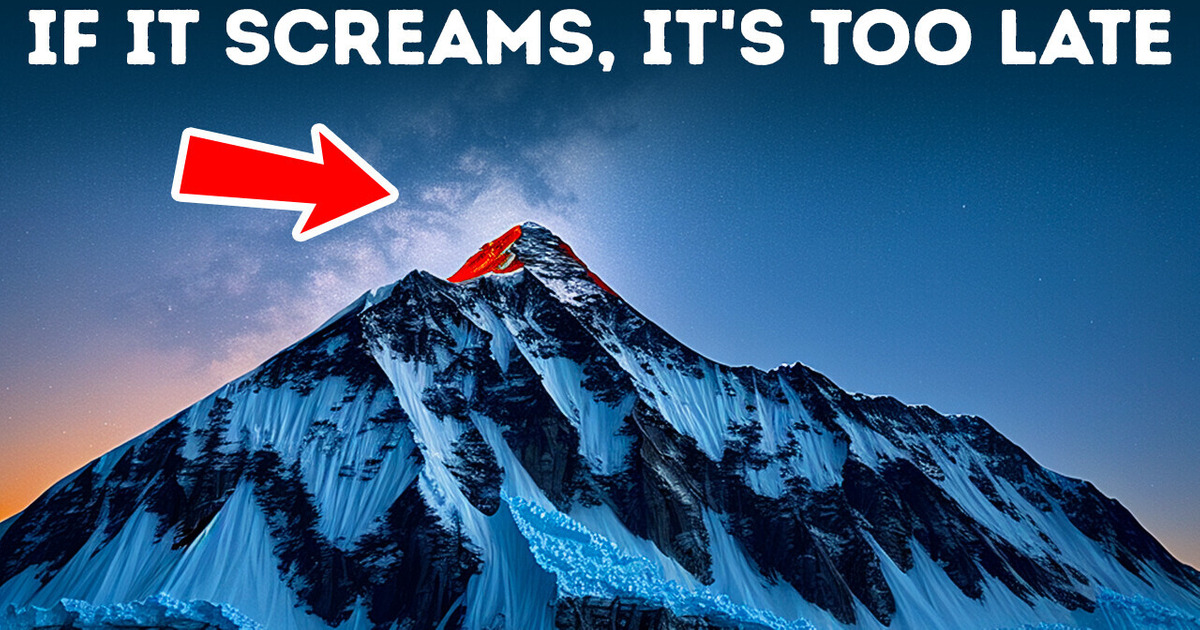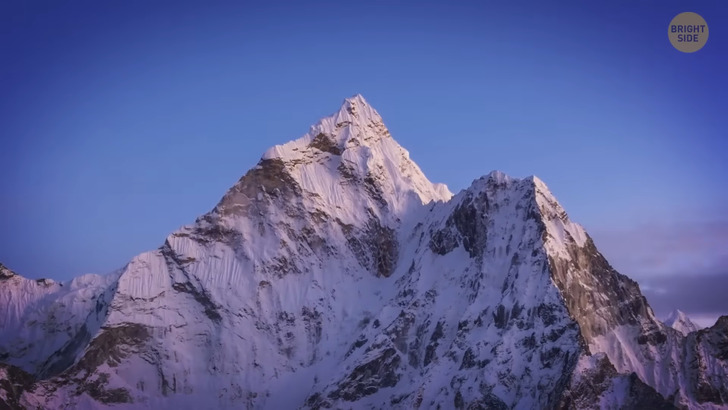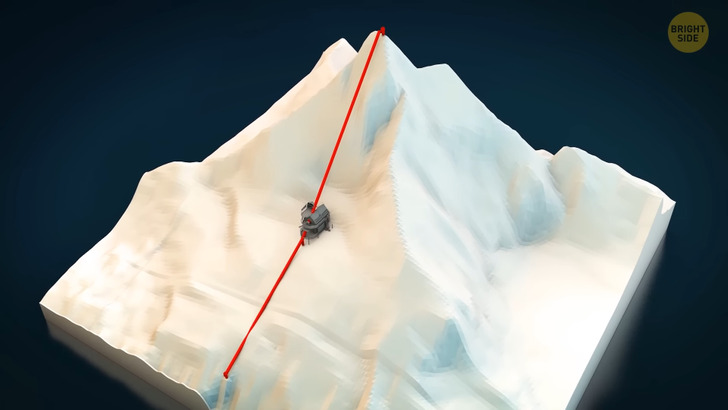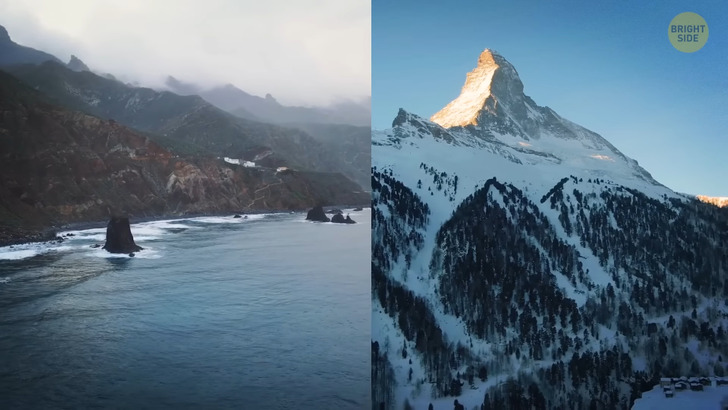I Got Fired the Day Before My Vacation—And HR’s Policy Was Their Biggest Mistake


Have you ever wondered why mountains seem so still and silent? Well, prepare to be amazed, because these majestic landforms have some hidden talents. You see, mountains are actually quite the performers! They have their own unique songs and dance routines. What does it mean and how does it work? Well, let’s see.

Get ready for a chilling revelation: Mount Everest has a secret nighttime symphony! And this mysterious “music” will send shivers down your spine. When darkness falls over the Himalayas, a strange eerie chorus echoes through the glaciers surrounding the majestic peak. A team of researchers embarked on a quest to unravel the mystery. Led by the glaciologist Evgeny Podolskiy, they trekked through the freezing temperatures of the Nepalese Himalayas. Their goal? To uncover the source of these hair-raising noises. The team was amazed by the incredible size and beauty of Mount Everest. During the day, the weather was nice and they could work comfortably. However, when night came, it became extremely cold, reaching temperatures as low as −5°F. At that moment, something interesting happened: the ice on the mountain started to break apart and make loud booming sounds that echoed through the valley.
To solve the mystery, the team used advanced technology that is typically used to measure earthquakes. They placed sensors on the surface of the glacier and listened to the vibrations it created. They also looked at information about temperature and wind. By comparing all of this data, they made a very important and exciting discovery. The culprit behind this frozen orchestra? It’s the sudden decrease in temperature. The icy surface of the glacier is very sensitive to these changes, causing it to crack and split with loud booming noises. This discovery helps scientists understand how glaciers behave in a world where climate change is becoming more pronounced.

This adventure is really important because it gives scientists who study glaciers and the climate in faraway places like the Himalayas very valuable information. The melting of glaciers in that area is happening really fast, and that’s a big problem. It’s a serious threat to South Asia. Recent research shows that the glaciers have been melting ten times faster in the past 40 years compared to the previous 700 years! But this isn’t the only reason why mountains can make strange noises. Other mountains might also sing their own “songs”. For example, Mount Matterhorn.
Guess what? Everything around us has its own special rhythm! Objects vibrate at certain frequencies because of their shape and what they’re made of. You’ve probably seen it before with tuning forks and wine glasses — when they’re hit with the right frequency, they start shaking and making sounds. But here’s something cool: even mountains have their own groove! They vibrate in their own unique way. Jeffrey Moore and his team of adventurous scientists wanted to find out if mountains can “dance” to their own music, just like bridges and tall buildings. They thought that the special shapes of mountains might make them vibrate at certain frequencies, which is called resonance.
But testing this idea wasn’t easy. Unlike buildings that engineers can shake or bridges that vehicles can drive over, mountains are massive and hard. It’s hard to make them move on purpose. Not giving up, Moore and his team took on a big project. They wanted to study how the shaking of the Earth affected the famous Matterhorn mountain. This incredible mountain is located on the border of Italy and Switzerland. It looks like a pyramid. It’s really tall, reaching about 15,000 feet high. It has four sides facing north, south, east, and west.

With the help of helicopters, the scientists put special devices called seismometers in specific places on the mountain. One was placed at the very top and used solar power to work. It was as small as a coffee cup. Another seismometer was tucked beneath the floorboards of a cozy hut on the mountain. And a third one was placed at the base of the mountain to compare the measurements. Together, they were the tiny observers that kept recording the movements of the mountain all the time. And they finally detected it! Even though the mountain’s movements are incredibly small, scientists discovered that the Matterhorn gently sways back and forth about once every 2 seconds. What’s truly surprising is that the top of the mountain moves up to 14 times more than its base!
The Eiffel tower kinda does the same thing. This giant iron structure is a pro at handling windy days, and when a storm blows through, it’s not afraid to show off its swaying skills. It’s like the Tower is saying, “Hey wind, bring it on!” But the reason behind the mountains’ movement isn’t just wind, as it may seem. So, why do mountains do that? Why do they dance and make a humming sound? Are they having a party that we’re not invited to? Well, it’s all because of something called seismic energy. When earthquakes happen in different parts of the world, their energy travels through the Earth and causes the mountains to vibrate.

The oceans also join in this mountain music. When waves move across the ocean floor, they create vibrations called microseisms. It’s like the Earth’s own heartbeat, felt all around the world. And guess what? The frequency of these vibrations matches the way the Matterhorn sways. It’s like the mountain and the oceans are chilling together. So, the next time you see a mountain, remember that it’s not just standing still — it’s actually part of a global symphony created by the Earth itself. This research helps us learn how earthquakes can affect steep mountains that are prone to landslides and avalanches. It also gives us a new way to appreciate mountains like the Matterhorn. They have their own hidden songs, swaying and vibrating to a mysterious melody deep within the Earth.
But there’s one more pretty cool thing about the mountains. They don’t just “talk” themselves... They may also influence the way we talk! Turns out, languages spoken in high-altitude areas have special sounds that you won’t hear elsewhere. After studying 567 languages, linguists found that 92 of them use a special kind of sound called ejectives. These sounds are made by pushing air out forcefully from the back of the throat. This creates bursts of speech that give these languages their distinctiveness. Scientists were really surprised by this connection. These sounds, like a strong “k” in “kha,” are not common in English or European languages. But some indigenous languages in North America and the area between the Black Sea and the Caspian Sea have them. What’s even more puzzling is that Tibetan languages, spoken in mountains, don’t use ejectives. Linguists are curious to unravel this mystery and learn more about how mountains and language are connected.

So, why do some languages spoken in the mountains have special sounds? Well, it’s a bit of a mystery, researchers have some cool ideas. One idea is that these sounds might help people keep their throats from getting dry when they talk in the dry air of the mountains. Another idea is that the lower air pressure up there makes it easier to make these sounds. But scientists are still figuring out the real reason. Although some experts are not entirely convinced by this explanation. They say that while geography can influence language, there are other reasons why languages might be similar, like borrowing words from nearby languages or being close to each other. But this research has still given us some amazing insights. Mountains not only shape the way our world looks, but they also shape the way we talk!
So, the next time you’re exploring a mountainous area, listen carefully to the local language. You might hear unique sounds and words that are influenced by the mountains themselves. It’s like nature is sharing its own special secrets through the language of the people who live there. And remember that the mountains themselves also have a voice, and they’re speaking to us in their own special way. Scientists are still on an exciting adventure to uncover their secrets. So let’s see what are some cool things they’ll find out in the future. Stay tuned!











